Over the summer, the first traveling exhibition of African contemporary art, “Prête-moi ton rêve,” opened in Casablanca. Next month, it debuts at Musée des Civilizations Noires in Dakar. The show features the work of 30 artists, like Abdoulaye Konaté, El Anatsui, William Kentridge, Chéri Samba, Bathélémy Toguo, and Ouattara Watts.
We caught up with general exhibition curator Yacoube Konaté, general exhibition curator to learn more about “Prête-moi ton rêve,” which will travel to Abidjan, Lagos, Addis Ababa, Cape Town, and Marrakech, presented by The Foundation pour le Développement de la Culture Contemporaine Africaine (FDCCA).
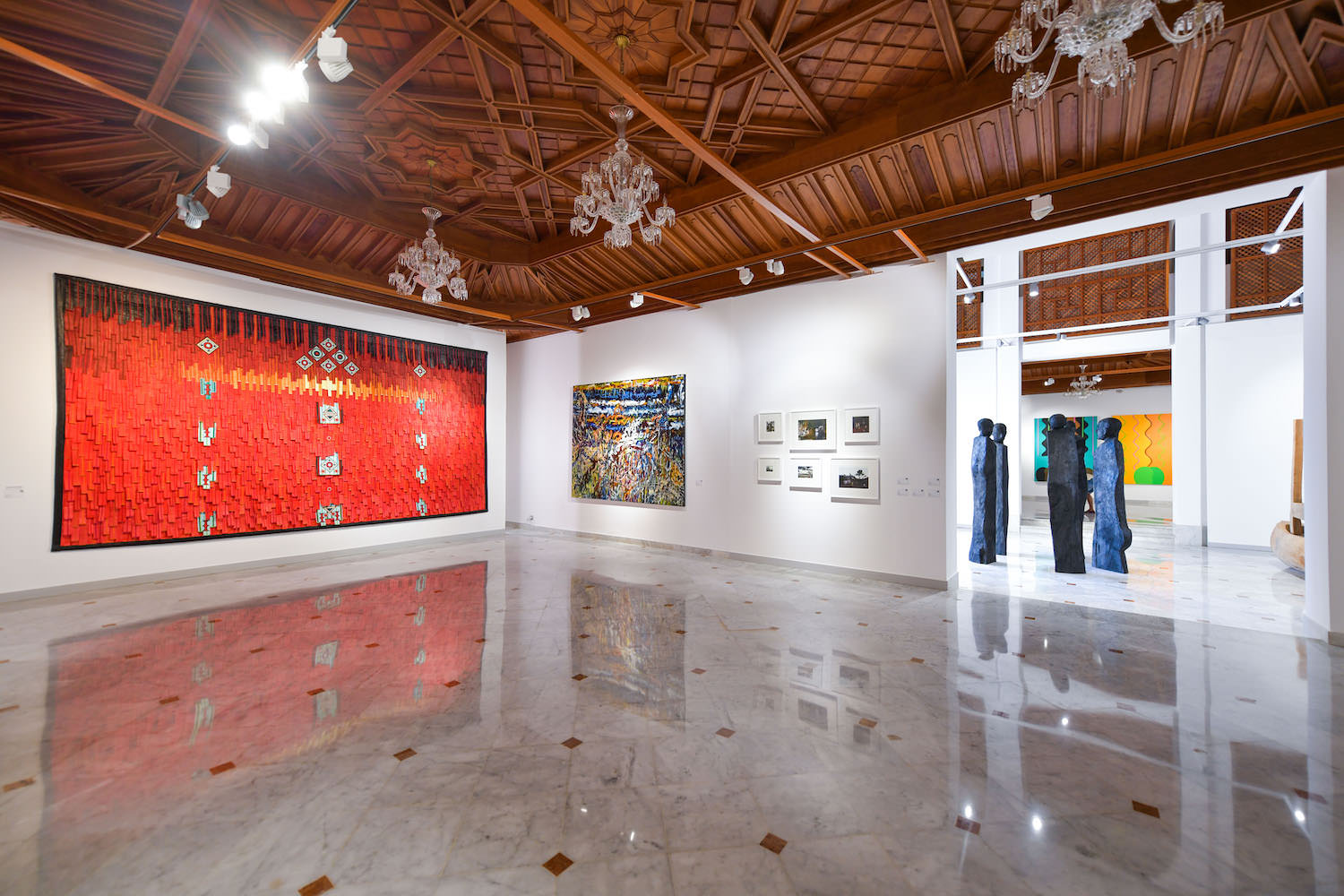
Installation view of “Prête-moi ton rêve”
© F Maazouz
WHITEWALL: Can you tell us about the exhibition’s starting point?
YACOUBE KANOTÉ: The start of the exhibition isn’t a point, but a person. It is Abdoulaye Konaté’s sense of friendship and unifying spirit that created the objective conditions for the birth of the idea of this exhibition whose first sketch dates back to the first week of February 2017, or so I remember. We were in Segou, Mali, as part of the Festival sur le fleuve Niger (Annual Festival on the Niger River): a beautiful program of cultural development led by Mamou Daffé and his team. The Niger Festival and the Abidjan Show Arts Market, both of which I have had the honor of being the director, are linked by a partnership and together we have created Circuit Mandingue, a protocol for the exchange and circulation of shows between four festivals in West Africa.
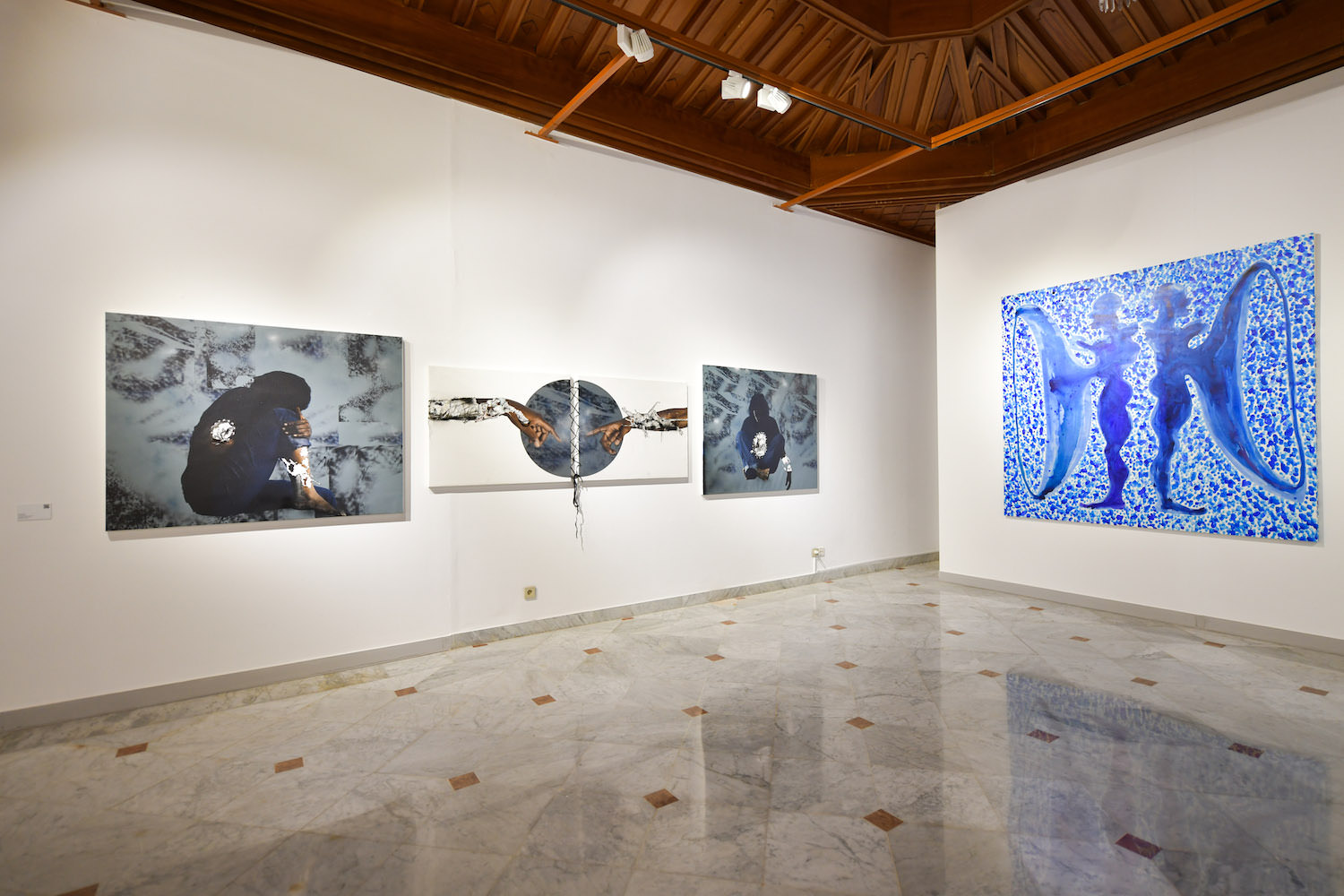
Installation view of “Prête-moi ton rêve”
© F Maazouz
Since 2015, Mamou (the director of the festival) and Abdoulaye Konaté, the immense painter, invited their friends – one of whom I have the honor of being – and together we planned to remake the world. In February 2017, in addition to Siriki Ki who is part of the group alongside Daffé and Abdoulaye, the circle has expanded to other visual artists, especially since Daffé accepted the idea of integrating a component of visual art at his festival. Soly Cisse from Senegal, Ludovic Faidairo (Benin) are also in the group. And as in the coming months, Abdoulaye Konaté is scheduled to exhibit at Galerie 38, in Casa, he invites Simo to introduce us, insisting that with Fithr Kettani, Gallery 38 in Casablanca would like to contribute to bringing both sides of the Sahara, through innovative and ambitious projects.
Simo who knew of my positions from searching online, asked me if I have an interesting idea. I had just finished an exhibition in Abidjan called Maîtres et Elèves (Masters and Students), where I asked 5 or 6 History of Art masters to each appoint me a student who they would be ready to pass the baton onto. The exhibition was successful and I proposed the idea of taking it onto a continental scale to Simo. Our first meeting was at Gallery 38, in Casa, uncovering a first look at this idea. Then, step by step, by the force of brainstorming, we arrived at the point of designing an exhibition that would confront at least the one of the fundamental problems of the visual arts sector in Africa: the lack of intra-African circuits; the disconnecting gap between the African elites of globalized contemporary art and the African public; the public whose names, right or wrong, are often invited to exhibit and speak.
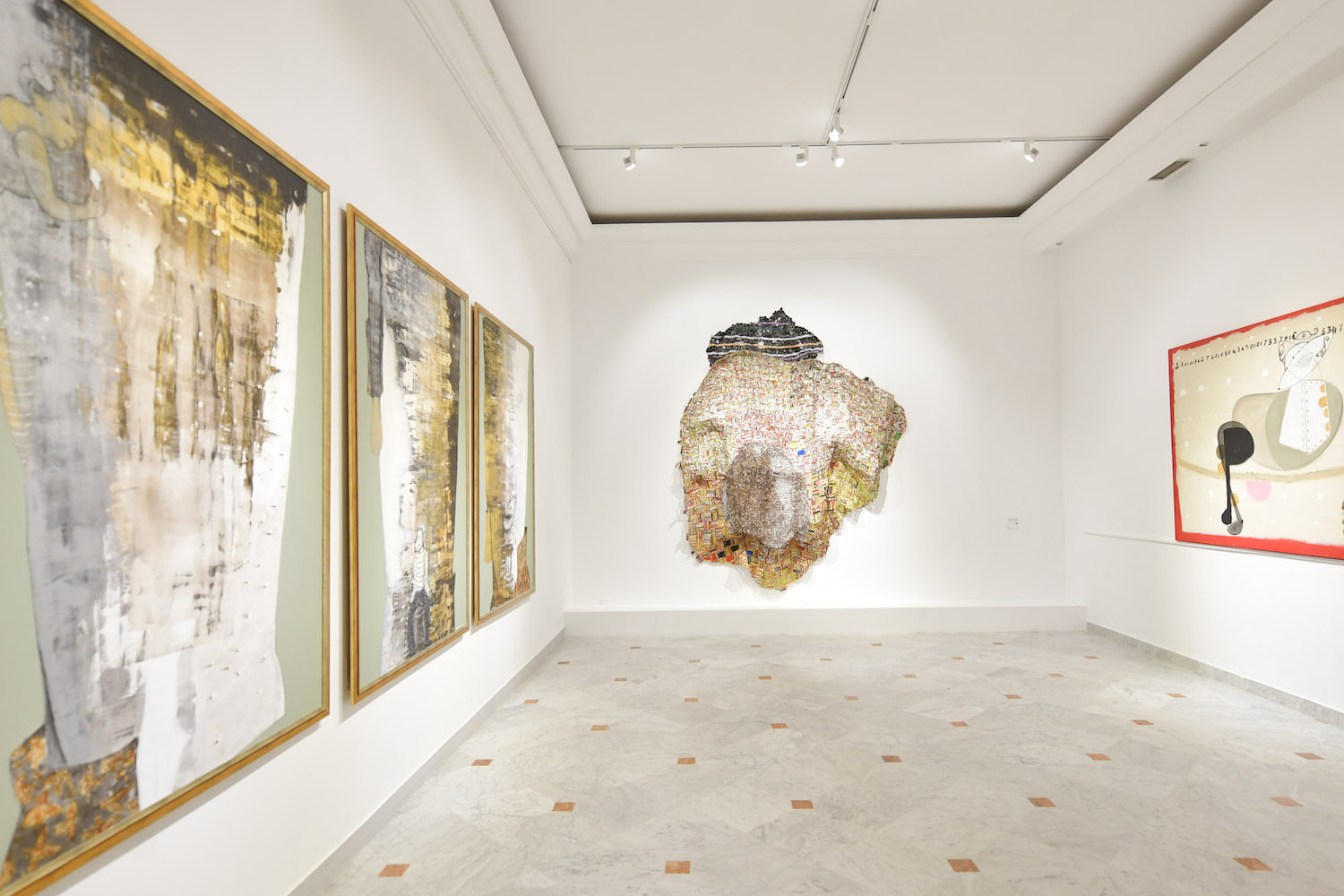
Installation view of “Prête-moi ton rêve”
© F Maazouz
WW: The English translation of ”Prête-moi ton rêve” is “Lend Me Your Dream.” Why did you choose this title?
YK: The real question is why this title was chosen rather than several others that had been proposed. This title met a negative criterion on which we (Abdoulaye, Fihr, Simo and myself) adopted: no title that brings Africa in visor, which highlights Africa. No transitional title of exoticism to share, or Africas to remix or reinvent … Because we are still Africans, who are more or less proud to be so. If is not shown, it is meant. If we do not get along, it is shown.
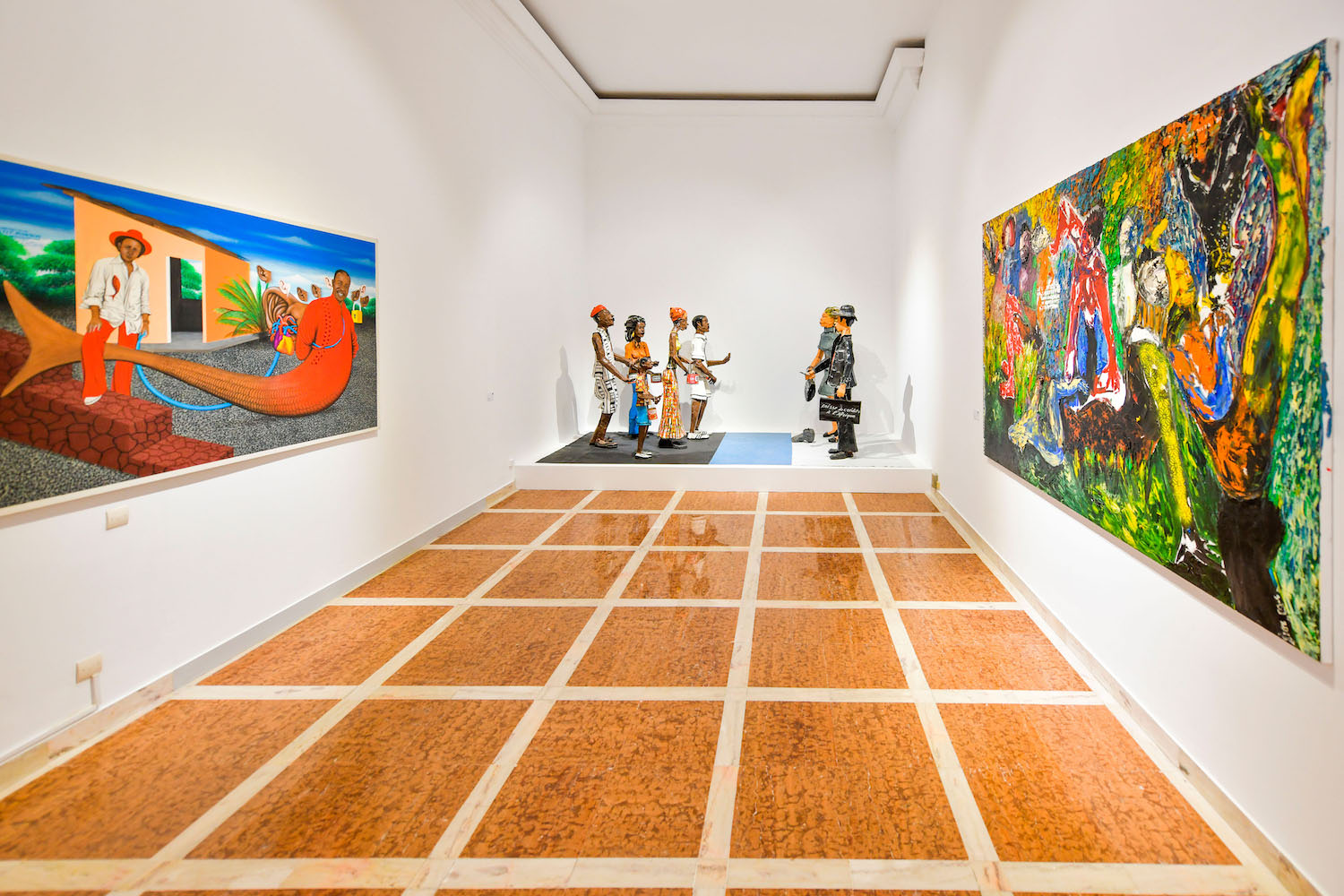
Installation view of “Prête-moi ton rêve”
© F Maazouz
On the other hand, this title connects us to the idea of art as an agency of dreams, to the effectiveness of the artist’s studio as a factory of illusions and dreams, to the thirst for sharing expressions through performance or an exhibition …
One may deem an artist to be a smuggler of dreams – someone like Abdelade Glover (Ghana), who paints beaches and markets, mocking the places where unity dissolves in the multitude; crowds where, however, a woman tirelessly walks with her head high, upright and dignified above the fray; a man or a woman who, like Kevin Brand in The Nineteen Boys, resuscitates schoolchildren, murdered in Soweto in 1976, by the South African police, in repression of the demonstration of the black schoolchildren against the wearing of the uniform and the imposition of the Afrikaans language. The artist is in their role when they re-enchant life and reality. They are always there when in times of de-sublimation or when they present the evil that man does to others and to nature.
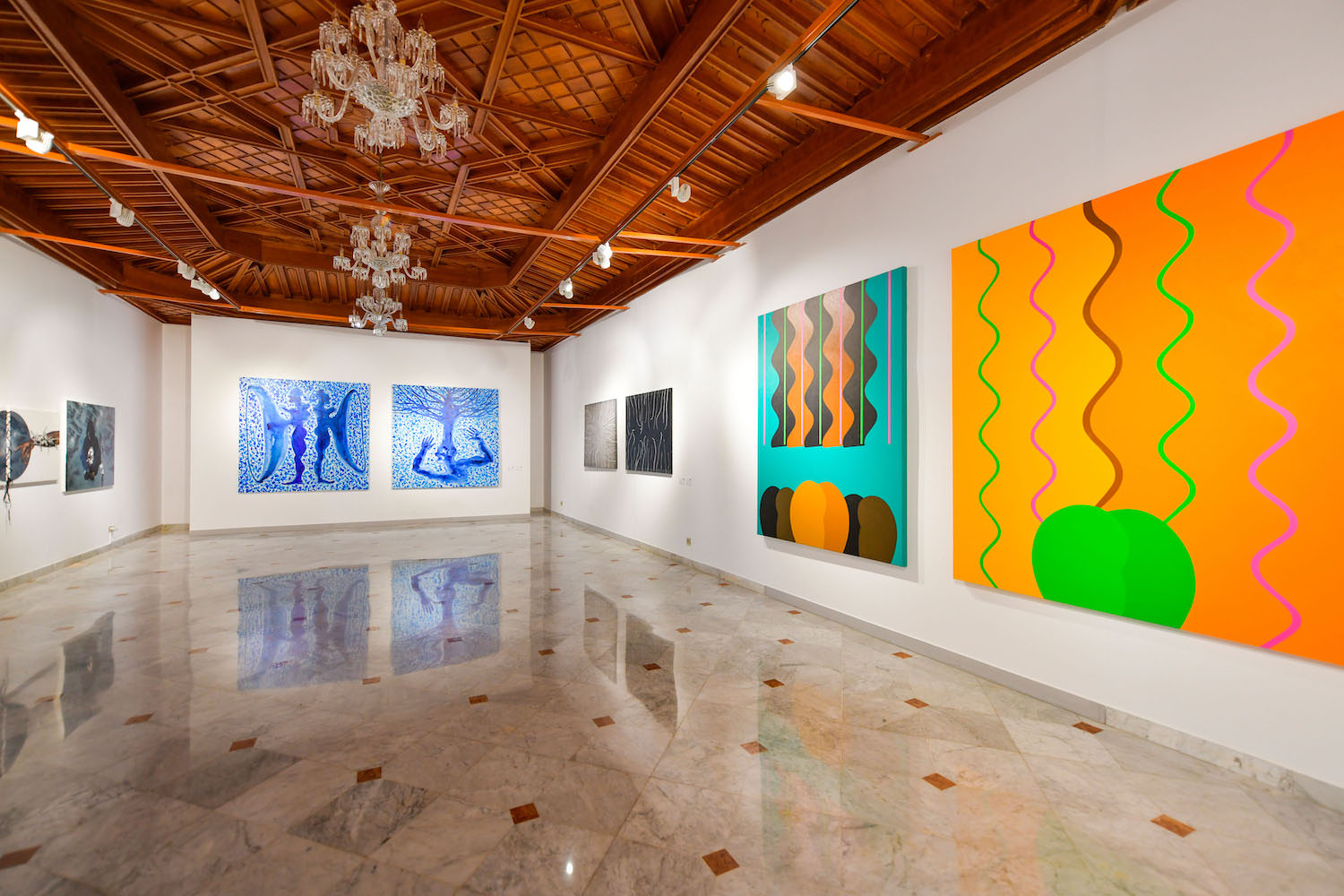
Installation view of “Prête-moi ton rêve”
© F Maazouz
WW: According to your quotation from the President Leopold Sedar Senghor, when he said that for Africa to be firmly united, it must find common ground in its cultural traits. How can you lend your dream to participate in / help the search for these common cultural points?
YK: The common features of Africa in the 1960s, when the project of African unity was debated, are no longer those of 2019. Today more than yesterday, the elites and even the left-behind, are caught up in patterns of behavior, ways of life, references that connect them directly to a dominant way of life in the unequal order of international trade. But they are closed to the circulation of the damned of the earth. In the almost inexorable train of world globalization, westernization operates like the world’s Trojan horse.
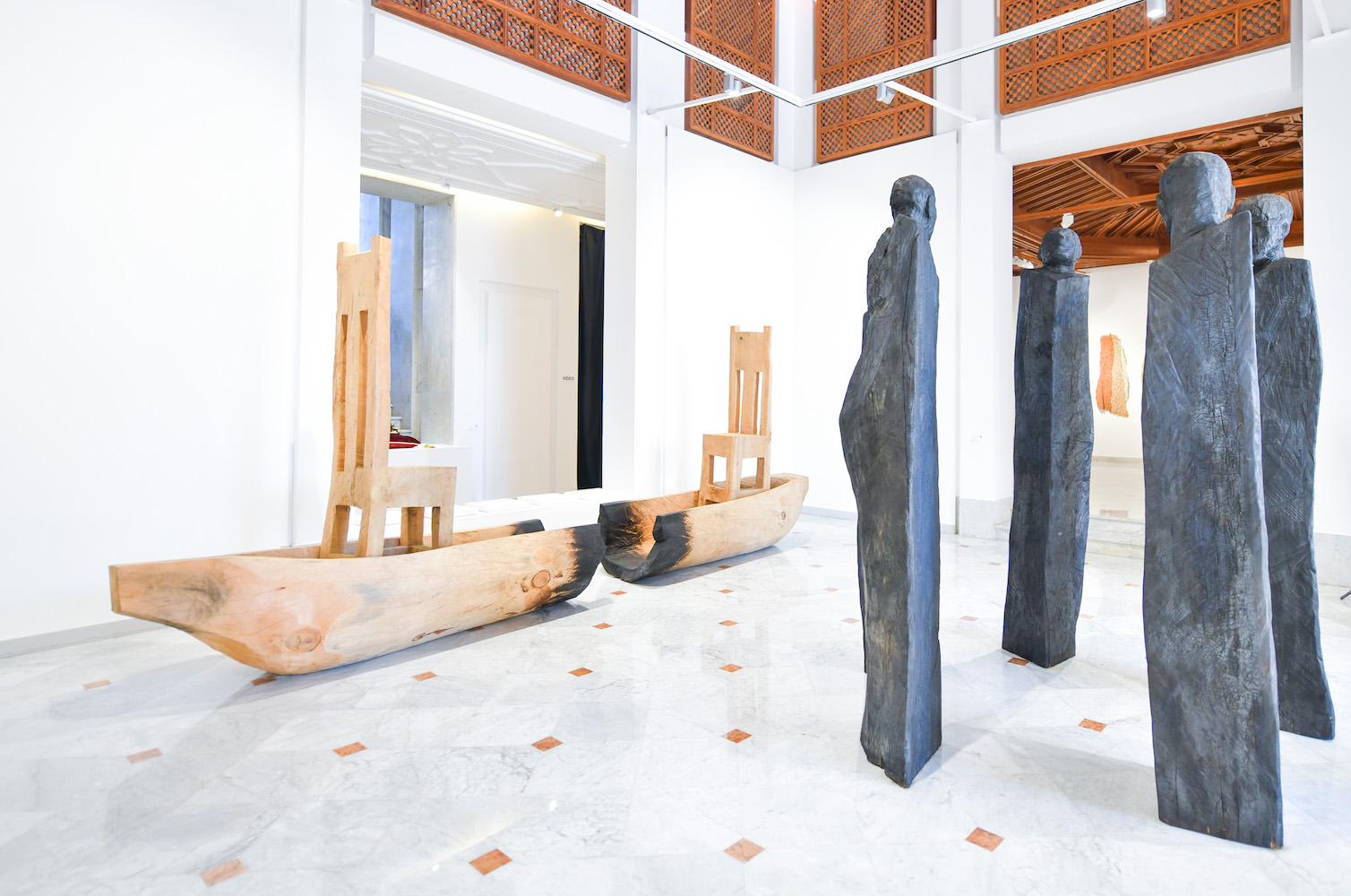
Installation view of “Prête-moi ton rêve”
© F Maazouz
Starting from the idea that Africa deserves to be better loved – less neglected by both the world in general and by Africans in particular – we can hypothesize that the better we know a person or a society, then the better we are at being prepared to love it, let alone respect it. The knowledge of African artists by African communities offers points of convergence, references from which debates can be made. Around the world, in global competitions, African athletes regularly give young people in Africa reasons to be proud and they have become models of success. Regularly, they return to play at the stadiums of the continent. For the continent’s youth, sports champions have engaging faces and life stories. The visual arts are not yet able to enjoy the power of sport-specific communication, which would be “mass art” per se. We want to work towards introducing hardworking, brilliant, relevant creators to African audiences in the hope that their lives and works will create spaces for discussion with artists in Africa. I hope that some of the works on display will be sources of inspiration for young artists, as well as centers of interest to the general public.
WW: How does the exhibition unfold? By theme or by date?
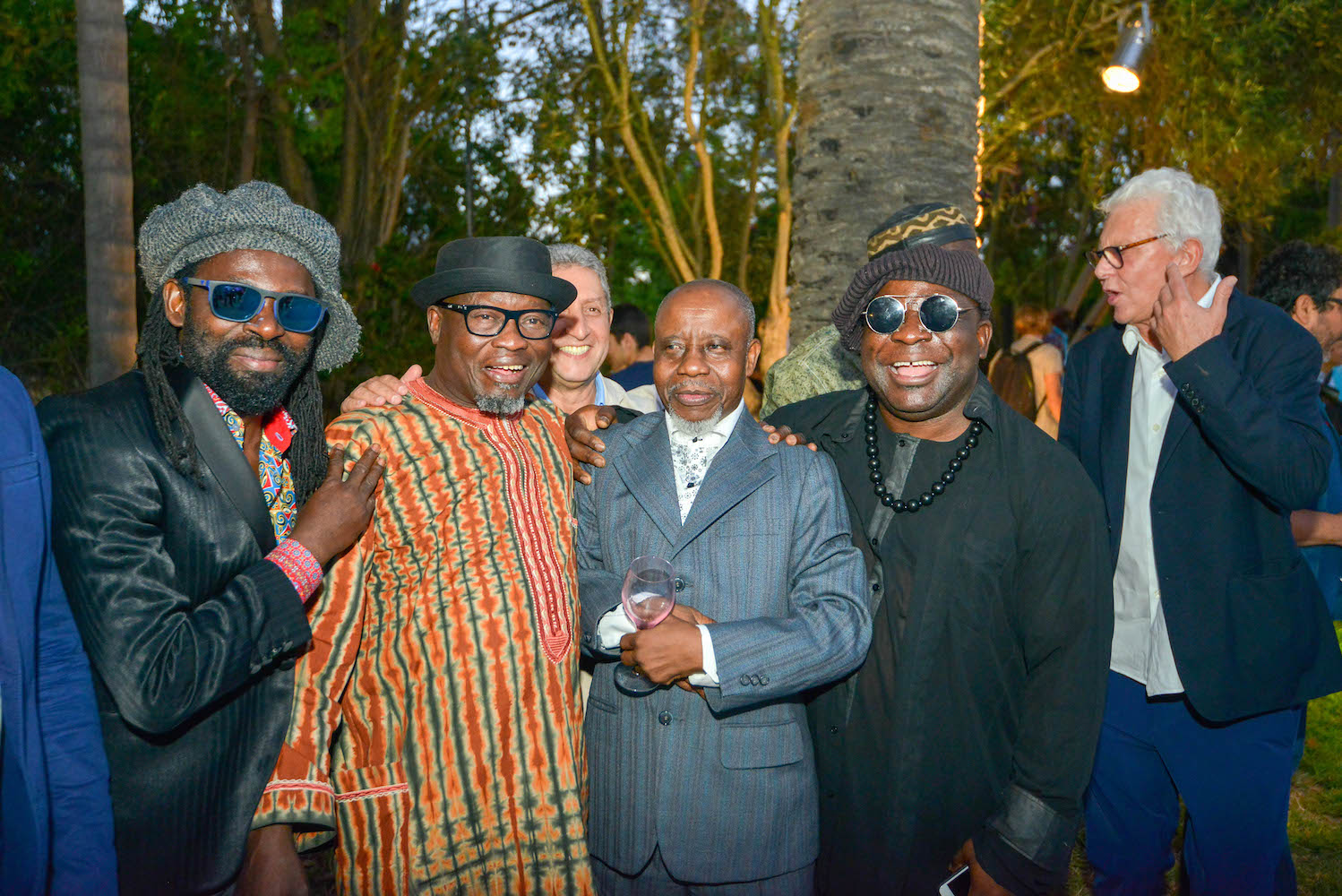
Installation view of “Prête-moi ton rêve”
© F Maazouz
YK: The theme of the exhibition remains “Lend Me Your Dream” – it does not change from one place to the other. On the other hand, each date can enrich the event with an individual tribute exhibition and a second exhibition that highlights a local curator, preferably a young person. The receiving team can also organize exchange meetings, debates, symposiums on specific issues. We encourage the receptive organisers to open up to the professionals of the context, so as to create, as we saw in Casa, the opportunities for exchanges between the galleries, between the spaces and the foundations, etc.
After Casa, in June 2019, the Museum of Black Civilizations in Dakar is hard at work to host the exhibition. It will be a great moment in the sense that the exhibition will celebrate the first anniversary of this museum, which is one of the most suitable platforms for the conservation and promotion of both modern and old African creation. After Dakar, we will be in Abidjan in March 2020. In Abidjan, the exhibition will coincide with the MASA, the Abidjan Performing Arts Market. The next step envisaged is Addis Ababa, preferably in June 2020.
WW: What can you tell us about the chosen cities for the tour?
YK: Each of the chosen cities has its own particular story/history with contemporary art. If judged by the impact of its biennale, Dakar can be held for the mecca of contemporary art in Africa. Capetown is one of the cities that focuses the most on secure values of the continent. Lagos offers a lively and buoyant market: the tradition of auctions is well established and there are several great collectors, not to mention the many artists and directors of galleries that animate the scene … Long story short!
Choosing the cities was difficult. Whenever possible, the plurality of sub-regions of the continent should be signaled while also taking linguistic diversity into account. At the same time, with each destination it was necessary to be able to count on men, women and relay structures interested in appropriating the event. These conditions are fulfilled in each of the cities on our list. Other cities that met the criteria… I think Bamako and Kinshasa. But to add even one more place would supposedly increase the duration of the tour from 15 months to 24. This leads to negotiations with customs administrations and also from galleries and collectors who gave us loans.








